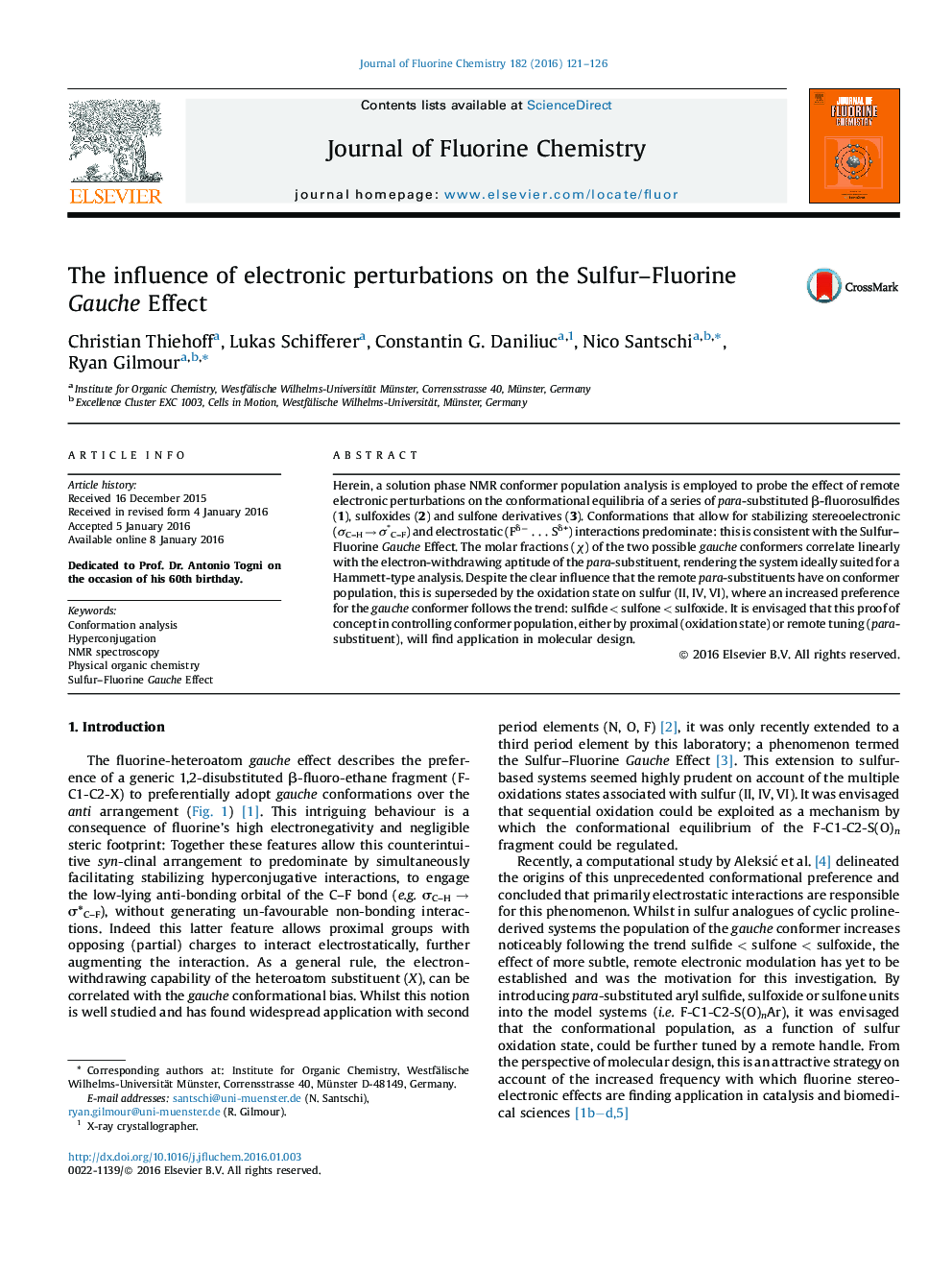| Article ID | Journal | Published Year | Pages | File Type |
|---|---|---|---|---|
| 1313560 | Journal of Fluorine Chemistry | 2016 | 6 Pages |
•Solution phase conformer populations determined using NMR.•A gauche arrangement predominates over the anti.•The gauche conformer molar fractions notably depend on the para-phenyl substituent.•Average gauche populations increase in the order sulfide, sulfone and sulfoxide.
Herein, a solution phase NMR conformer population analysis is employed to probe the effect of remote electronic perturbations on the conformational equilibria of a series of para-substituted β-fluorosulfides (1), sulfoxides (2) and sulfone derivatives (3). Conformations that allow for stabilizing stereoelectronic (σC–H → σ*C–F) and electrostatic (Fδ−…Sδ+) interactions predominate: this is consistent with the Sulfur–Fluorine Gauche Effect. The molar fractions (χ) of the two possible gauche conformers correlate linearly with the electron-withdrawing aptitude of the para-substituent, rendering the system ideally suited for a Hammett-type analysis. Despite the clear influence that the remote para-substituents have on conformer population, this is superseded by the oxidation state on sulfur (II, IV, VI), where an increased preference for the gauche conformer follows the trend: sulfide < sulfone < sulfoxide. It is envisaged that this proof of concept in controlling conformer population, either by proximal (oxidation state) or remote tuning (para-substituent), will find application in molecular design.
Graphical abstractFigure optionsDownload full-size imageDownload as PowerPoint slide
